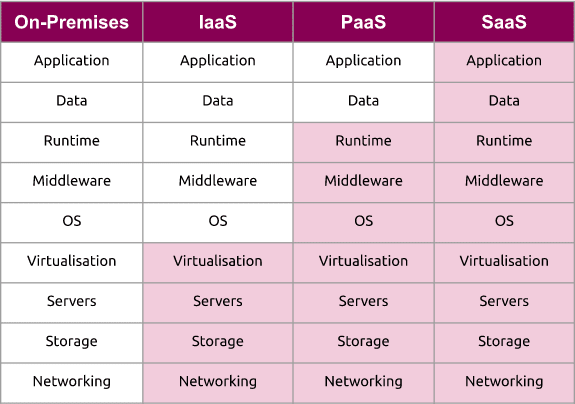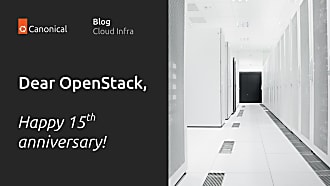Omar Ali Amin
on 17 June 2022
Even after the public cloud hype, private clouds remain to be a very essential part of many enterprises’ cloud strategy. Private clouds are simply giving CIOs more control over their budgets, enabling better security and allowing the flexibility to build best of breed IT solutions. So let’s stop here and take a step backwards, why are organisations even investing in their IT?
Why are private clouds complicated?
IT is an investment, like any other investment an organisation makes. Think of it financially, nobody will decide to invest because they think it will be cool! There is a financial return at the end of any road that makes the story reasonable. This might be:
- Cutting down current costs, saving money.
- Securing the data and applications, building reputation and saving money
- Improving productivity, helping organisations make more money.
- Better serving their customers, making more money.
- Enabling the launching of a new product or service, making more money.
- Cutting down the time-to-market, making more money faster.
It usually falls under one of these areas or their derivatives, and it’s all about the ROI. The promise of the cloud transformation was to contribute to most of these areas, if not all. Simply by cutting down infrastructure and operational costs and providing a rapid time-to-market for organisations to get their workloads live.
However, this was not the case for many who pursued the cloud, whether it was the private or public cloud. Running your IT on the long term and at scale is expensive on the public cloud. Yet, the day-2 operations of the private cloud creates unavoidable friction. Adding up to this, there are many approaches to building and setting up your cloud. Should it be a bare-metal cloud, a Kubernetes or a virtualized cloud? Should you run it in the public cloud, on-premises or in a co-located facility? Which technologies or vendor products should you use in every layer of your stack? There are literally endless possibilities of how you can create a best of breed cloud. So, how can we build a successful cloud transformation strategy?
How has the public cloud changed the game?
As the public cloud emerged, organisations started migrating their workloads to the public cloud to reduce their TCO. Public cloud service providers have created an alternative pathway for organisations to offload the hassle of managing underlying infrastructure, and allowing them to focus more on their applications. Due to simplicity, fractional consumption and pay-as-you-consume pricing model, the public cloud also enabled the birth of many startups and small businesses and allowed them to compete with larger organisations. It has created space for innovation with minimum constraints. Before the public cloud, a business would have to build a data centre to host their services, costing them hundreds of thousands of dollars just for their IT. That was a massive overhead and a high risk for many in their very early stages. With the development of the public cloud, we have seen many startups were empowered to compete with global enterprises, disrupting many industries and impacting our everyday lives. So let’s take a closer look at what public cloud providers offer compared to private clouds.

In an on-premise environment, the organisation is responsible for the whole stack, starting with networking, storage and servers moving all the way to the application layer. In the public cloud, if your organisation uses IaaS, you take care of the OS and above. All the underlying infrastructure are basically dependencies that the cloud provider will manage for you. If you’re using a PaaS, they will also take care of the OS, middleware and runtime of your environment. With SaaS, you’re basically an end user of an application where the cloud provider manages everything for you.
This is something that you all probably know, but I want to dig deeper into what falls under whom’s responsibility. In cases where you wish your organisation has the most control over the cloud, virtualisation, servers, storage and networking are still managed by your cloud provider. This tells us that infrastructure has been commoditized by hyperscalers, and managing them does not uniquely provide your business with a competitive edge that impacts your organisation. Offloading these services will help you focus more on your strategic layers and become more innovative.
Moving towards a data centre as a service
The rule of thumb is: today’s technology becomes tomorrow’s commodity. Accordingly, the less unique your building blocks are, the easier it is to operate and evolve them in the future. Take PCs, for example, there is nothing unique about them today. Any piece of hardware will have a layer of OS on top that will dictate how this hardware should function, and anyone with basic computer skills should be able to use them. Data centres should be designed in the exact same way, in fact, this is how they evolved with time. In the last several years, we can see how most data centre and cloud solution vendors are commoditising their hardware and focusing on software to create the layer of intelligence that differentiates their solutions.
In short, managing the dependencies of your business applications does not add value to your organisation nor does it enrich your competitive edge in the market. However, digitising your operations, enabling remote work or heavily focusing on R&D can contribute to your competitive advantage. Frankly, 96% of executives are unhappy about innovation according to a recent McKinsey report. The findings are not surprising given that most IT specialists are more focused on keeping the lights on. This has become one of the main drivers why many organisations are moving towards managed private clouds. They want to cut down operational costs and gain more control over their budgets to be able to shift focus towards innovation. Keeping in mind that the ultimate goal behind open source is to enable flexibility and agility and cut down costs, avoiding its complexity is a huge gain for the organisation.
Thinking about simplifying your operations?
Download the guide “Managed IT Services: Overcoming CIOs biggest challenges”
Read the “Private cloud vs managed cloud: cost analysis” whitepaper
Visit our managed services website to learn more



